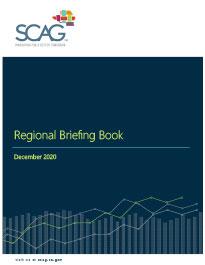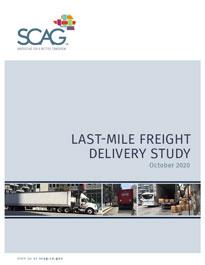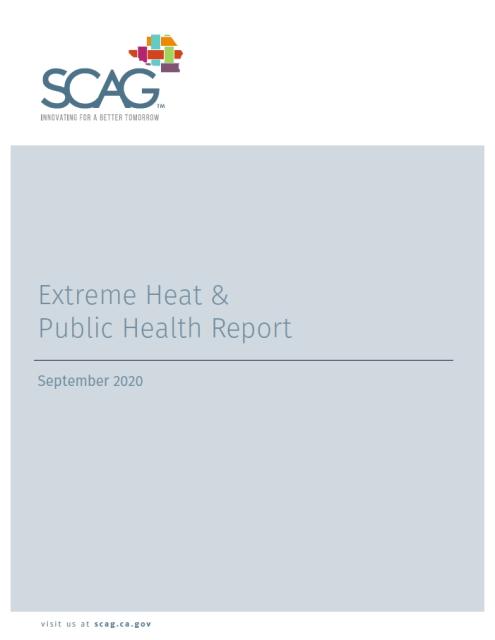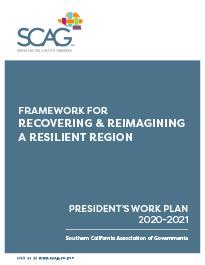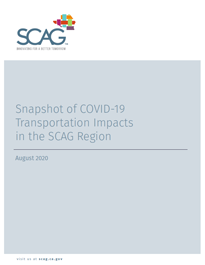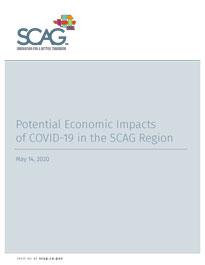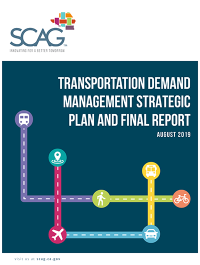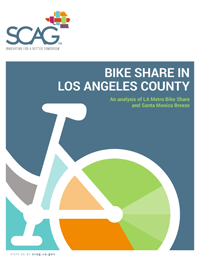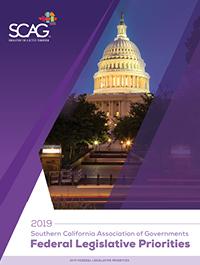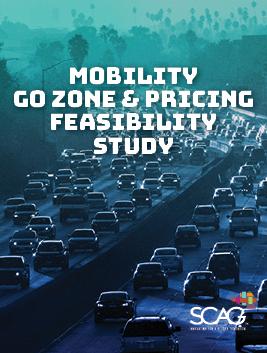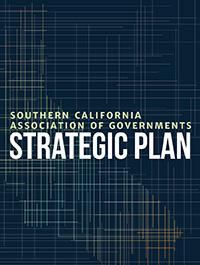Regional Briefing Book
SCAG’s Economic Summit began in the wake of the Great Recession as a convening to expand the region’s economic base and to determine priorities for the region that help businesses, public agencies, and communities improve economic vitality.
However, 2020 has brought increased recognition that improving economic health and achieving equity will require broader approaches that address social, economic, and environmental factors that influence the economy in the wake of recent events, including those related to the COVID-19 pandemic. Relatedly, there are a growing number of emerging initiatives which provide the building blocks to address systemic institutionalized racial inequities. Many challenges remain to address racial disparity within an inclusive economic development strategy.
This briefing book represents a first step toward a more comprehensive framework for an inclusive economic recovery.
It is comprised of five parts: 1.) State of the SCAG Region Economy & Outlook; 2.) Modeling the Economic Impacts of COVID-19 Through FY 2021; 3.) Centering Racial Equity as a Driver for Economic Recovery; 4.) Conclusions & Next Steps; 5.) Appendix: County Insights
Download the Regional Briefing Book, December 2020
Last-Mile Freight Delivery Study
The purpose of the Last-Mile Freight Delivery Study is to increase understanding of last-mile delivery issues for the Southern California Association of Governments (SCAG) and its member cities by examining the relationship between last-mile access conditions, the delivery of goods, and the role of last-mile delivery in the overall transportation system.
The study serves as a foundational approach and assesses the use of curb areas for deliveries, and the magnitude of other curb uses competing for curb space in the study area of the City of Los Angeles. It provides findings based on field data collection, analyses, and stakeholder discussions.
Recommendations are included for blocks in case study areas, pilot project concepts, policy considerations, and a Toolbox of Strategies for cities throughout the SCAG region to utilize when faced with their own unique delivery challenges.
Read the Last-Mile Freight Delivery Study
Extreme Heat & Public Health Report
This report covers the public health ramifications of extreme heat, as well as vulnerabilities, best practices, and policies, plans, and strategies in place in the SCAG region. The report also touches on interventions and strategies, heat response plans and adaptation and mitigation strategies outside of the SCAG region, and recommendations.
Download the Extreme Heat & Public Health Report.
SCAG President Introduces 2020-2021 Work Plan
President Rex Richardson introduced his comprehensive work plan for 2020-2021, “Framework for Recovering and Reimagining a Resilient Region.” Intended to be a collaborative and inclusive process, the framework is focused on the implementation of Connect SoCal, promoting housing production, data and information services, and legislative efforts.
Snapshot of COVID-19 Transportation Impacts in the SCAG Region
The public response to the novel coronavirus (COVID-19) pandemic and the subsequent national, state, county, and local mandatory stay-at-home orders has significantly impacted transportation demand globally, nationally, regionally, and locally. As the largest metropolitan planning organization in the nation, the Southern California Association of Governments (SCAG) is at the forefront of transportation planning and analysis. In order to facilitate regional planning and public awareness, SCAG prepared this document to highlight impacts of the COVID-19 pandemic on transportation activities to date.
Snapshot of COVID-19 Transportation Impacts in the SCAG Region
Potential Economic Impacts of COVID-19 in the SCAG Region
This white paper provides an initial assessment of potential employment and taxable sales implications of the COVID-19 pandemic in the region as of the end of April, 2020. A discussion of data and information used in their development is also provided. The analysis assumes a low-point occurring around June 1, 2020 with a resumption of some economic activity thereafter, but a long, slow recovery extending through the end of 2021. Additionally, numerous assumptions are made about the decline and potential recovery trajectory in individual industry sectors. Future taxable sales in the SCAG region are compared to a baseline and assume a linear growth trajectory between June 2020 and December 2021. Employment and economic output are modeled separately using a structural economic forecasting model (REMI). Analyses of the pandemic’s impact at this stage are subject to an extremely high level of uncertainty; importantly this analysis does not assume a second wave of the pandemic or specifically model the impact of additional federal action. As the pandemic unfolds and additional data become available, these assumptions, modeling strategies, and outputs can be revised.
SCAG Transportation Demand Management Strategic Plan and Final Report
SCAG’s Transportation Demand Management (TDM) Strategic Plan identifies TDM policies and programs that increase the efficiency of the transportation system, reducing vehicle miles traveled and greenhouse gas emissions through alternative modes of travel. The Plan was developed through a region-wide collaborative effort involving diverse stakeholders from the public, non-profit, and private sectors, and is an important element of Connect SoCal. SCAG is currently in the process of implementing several priority recommendations.
SCAG Transportation Demand Management Strategic Plan and Final Report
Bike Share in Los Angeles County Study
SCAG’s Bike Share in Los Angeles County Study examines the role of bike share in the Los Angeles regional transportation system. The results are intended to guide decision-making related to future system investments and new shared mobility programs in the region. This report shows that users are happy with what these systems offer and for the most part simply want more of it — more availability of bikes, more flexibility for trip times, more e-bikes, more geographic reach, and more integration with transit. Recommendations identified through this effort include investment in equitable access and the identification of new funding opportunities.
2019 Federal Legislative Priorities
SCAG maintains a Federal and State Legislative Program, which consists of the Regional Council’s positions on policies and legislative initiatives related to SCAG’s core planning and policy areas that need the leadership and support of Congress and the California State Legislature to resolve challenges facing the SCAG region. This report summarizes SCAG’s 2019 legislative priorities around the issues of transportation, air quality, freight/goods movement, housing, environmental impact, sustainability, and economic recovery and job creation.
Mobility Go Zone & Pricing Feasibility Study
SCAG’s ”Mobility Go Zone Program Feasibility Study” takes a close look at how cordon pricing, and a “Go Zone” program, could be deployed to better manage traffic congestion and greenhouse gas emissions in Southern California. SCAG selected the Westside Los Angeles area for analysis as an initial proof-of-concept pilot location. This report shows that decongestion fees can have sizable impact in transportation mode choices and overall travel times by incentivizing motorists to travel at different times throughout the day.
Strategic Plan
In early 2018, SCAG adopted a new strategic plan to guide us as we work toward a brighter future for Southern California. Developing this new roadmap for the agency was an inclusive process that challenged and engaged staff, board members, and stakeholders across sectors. Using stakeholder surveys, focus groups and best‐practice analysis, the President’s Strategic Plan Committee and a cohort of SCAG staff developed an update designed to provide new and ambitious guidance for the agency. With fresh mission and vision statements, refined core agency values and a new set of goals and objectives, we have created a strategic path that prioritizes innovation, collaboration and solution-finding as we continue our work to improve the quality of life for all Southern Californians.



